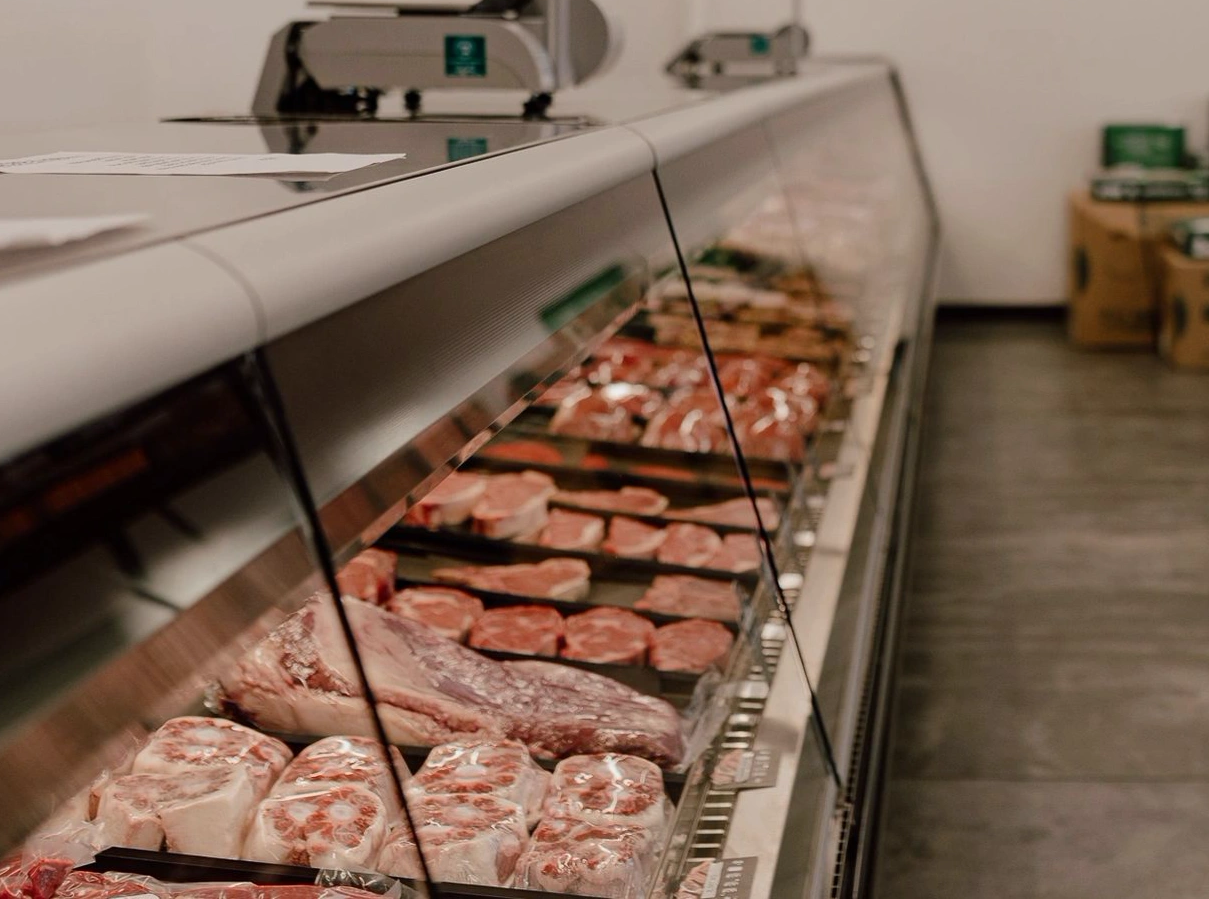Bagley Farms Meat Market Edwardsville IL: Your Best Destination for Local Meat Selection
Bagley Farms Meat Market Edwardsville IL: Your Best Destination for Local Meat Selection
Blog Article
Uncover the Art of the Butcher's Cut in a Modern Meat Market
In the ever-evolving landscape of contemporary meat markets, the butcher's cut has transcended its traditional origins, merging old-time workmanship with modern techniques. Today's butchers are not just cpus of meat; they are experienced craftsmens who stress sustainability and honest sourcing. Their proficiency in selecting and preparing cuts tailored to details cooking demands provides an unrivaled eating experience. Yet, what really sets the modern-day butcher apart is their capability to forge a deeper connection in between consumers and the origins of their meat. Just how do these masters balance tradition with technology, and what ramifications does this have for the future of meat usage?
Evolution of Butchery Methods
The evolution of butchery methods mirrors a rich tapestry of advancement and adaptation driven by advancements in technology, adjustments in consumer need, and a much deeper understanding of meat science. Historically, butchery was a craft passed down via generations, with approaches refined over centuries to make best use of yield and flavor. Nonetheless, the industrial transformation introduced automation, transforming typical practices and allowing massive handling.
The mid-20th century saw butchery strategies further fine-tuned by clinical understandings into muscle mass biology and meat aging, improving both inflammation and preference. Innovations like vacuum packaging and refrigeration prolonged item shelf-life, enabling butchers to expand offerings and boost quality assurance. This period additionally noted the surge of specialized equipment, such as band saws and meat slicers, which enhanced precision and efficiency in meat processing.

Digital systems currently aid in tracking pet provenance and enhancing cuts to meet specific client choices. Furthermore, a revival in artisanal butchery has emerged, mixing typical skills with contemporary knowledge to cater to customers looking for ethical and lasting meat options.
Recognizing Meat Cuts
Comprehending the intricacies of meat cuts is crucial for both butchers and consumers looking for high quality and worth. Each cut comes from a various part of the pet, imparting one-of-a-kind flavors, structures, and cooking techniques - bagley farms meat market edwardsville il. Proficiency of these differences not just enhances culinary experiences yet also makes the most of the energy of each carcass. For butchers, accurate cuts mirror skill and respect for the craft, making certain very little waste and optimum yield.

Recognizing muscle mass structure is crucial; muscles made use of a lot more frequently by the pet have a tendency to be tougher and find more information are best fit for slow food preparation techniques, while less-used muscles, like those located in the loin, are extra tender and ideal for cooking or roasting. Familiarity with these differences equips consumers to make educated choices, boosting their cooking endeavors.
Picking High Quality Meat
Choosing the ideal meat entails even more than just choosing an aesthetically enticing item from the display screen. The art of picking quality meat needs a discerning eye and knowledge of details characteristics that indicate quality and quality.
Secondly, consider the marbling, which refers to the white flecks of fat within the muscle mass. Appropriate marbling is a crucial indication of inflammation and taste, as it thaws throughout cooking, improving the meat's juiciness. Bear in mind, greater marbling often associates with exceptional top quality cuts, such as USDA Prime.
Appearance is an additional critical factor; meat should feel firm to the touch, not slimed or excessively soft. Additionally, bear in mind the scent. Fresh meat should have a clean, neutral scent, without any kind of sour or repulsive odors.
Coupling Cuts With Cooking Methods

Alternatively, harder cuts like brisket and chuck roast are rich in collagen, which damages down into gelatin when cooked slowly. These cuts are excellent for braising or slow-moving roasting, enabling the meat to tenderize gradually and establish deep, intricate flavors. In a similar way, cuts such as brief ribs and pork shoulder prosper with slow-cooking techniques, where prolonged cooking times transform their durable textures web right into delicious recipes.
Lamb shanks and oxtail, which need long term food preparation to soften, are perfect prospects for cooking or slow simmering. These techniques coax out rich, passionate flavors while preserving wetness. By recognizing the one-of-a-kind attributes of each cut, chefs and home chefs alike can raise their cooking creations, guaranteeing visit each recipe is both pleasing and unforgettable.
The Butcher's Function Today
Browsing the developing landscape of the contemporary meat market, the butcher's duty today extends beyond mere preparation of cuts. Contemporary butchers are culinary craftsmens, educators, and supporters for sustainable practices. They connect the gap in between the ranch and the fork by making certain ethical sourcing, recognizing pet husbandry, and prioritizing transparency in the supply chain. This change shows the expanding consumer demand for top quality over amount, where provenance and animal well-being are vital.
Along with crafting accurate cuts, butchers currently involve straight with customers, supplying cooking recommendations and tailoring selections to fit private needs and preferences. Their experience in meat aging, marbling, and flavor profiles empowers customers to make enlightened decisions, boosting their culinary experiences. This customized service exhibits the butcher's progressing role as a relied on advisor in the cooking area.
Furthermore, butchers are pivotal in minimizing waste, using entire animals to produce varied products such as sausages and supplies. This detailed technique not only respects the pet however likewise straightens with modern sustainability objectives. By doing this, the modern butcher embodies both practice and development, adjusting to an ever-changing market while protecting the artistry and stability of their craft.
Conclusion
Mastery in recognizing diverse meat cuts and top quality signs equips butchers to offer informed referrals, aligning certain cuts with ideal cooking approaches. By recognizing historic techniques while welcoming modern demands, the butcher's duty continues to be essential in today's sophisticated meat market.
Report this page